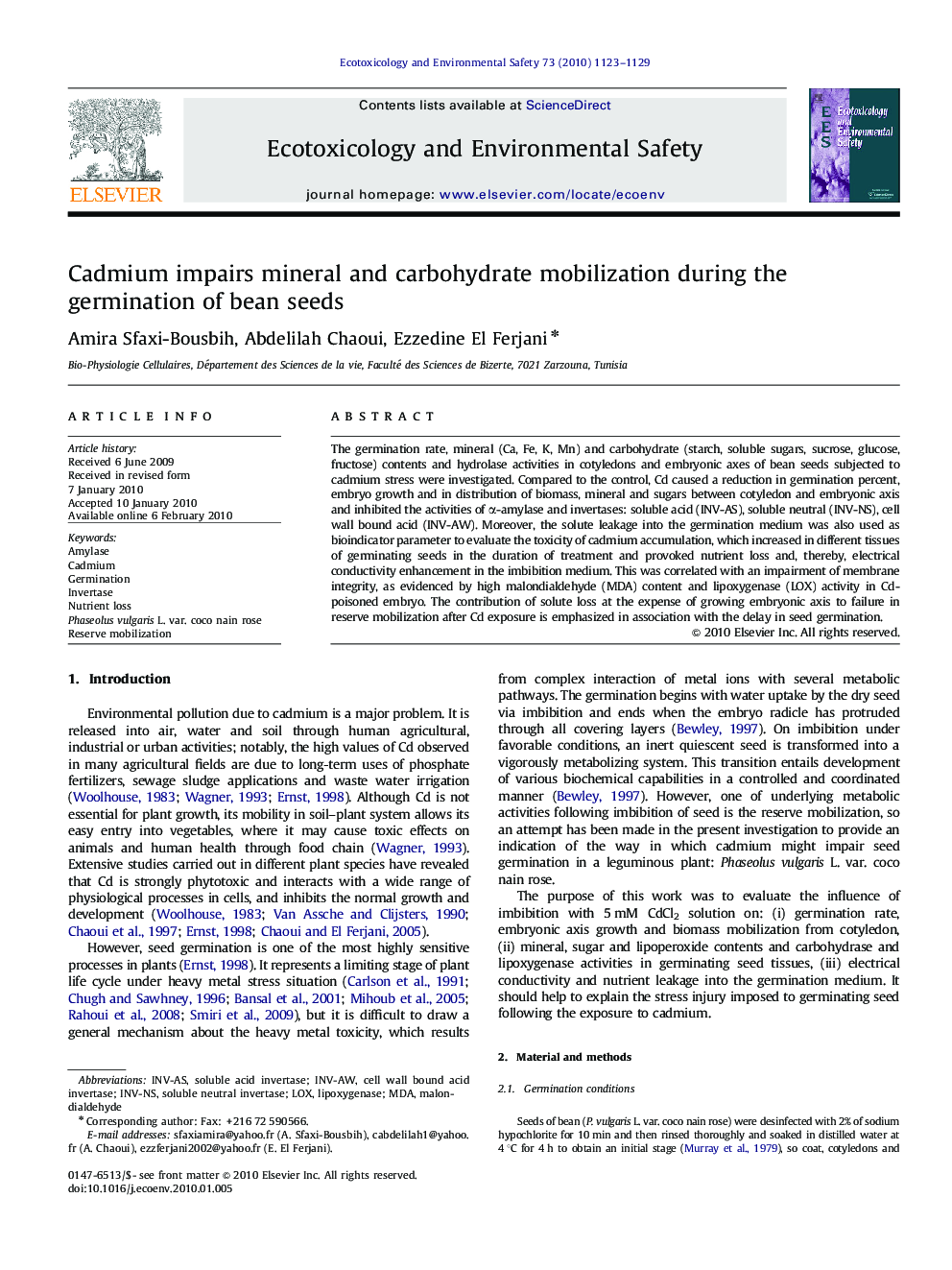| Article ID | Journal | Published Year | Pages | File Type |
|---|---|---|---|---|
| 4421125 | Ecotoxicology and Environmental Safety | 2010 | 7 Pages |
The germination rate, mineral (Ca, Fe, K, Mn) and carbohydrate (starch, soluble sugars, sucrose, glucose, fructose) contents and hydrolase activities in cotyledons and embryonic axes of bean seeds subjected to cadmium stress were investigated. Compared to the control, Cd caused a reduction in germination percent, embryo growth and in distribution of biomass, mineral and sugars between cotyledon and embryonic axis and inhibited the activities of α-amylase and invertases: soluble acid (INV-AS), soluble neutral (INV-NS), cell wall bound acid (INV-AW). Moreover, the solute leakage into the germination medium was also used as bioindicator parameter to evaluate the toxicity of cadmium accumulation, which increased in different tissues of germinating seeds in the duration of treatment and provoked nutrient loss and, thereby, electrical conductivity enhancement in the imbibition medium. This was correlated with an impairment of membrane integrity, as evidenced by high malondialdehyde (MDA) content and lipoxygenase (LOX) activity in Cd-poisoned embryo. The contribution of solute loss at the expense of growing embryonic axis to failure in reserve mobilization after Cd exposure is emphasized in association with the delay in seed germination.
